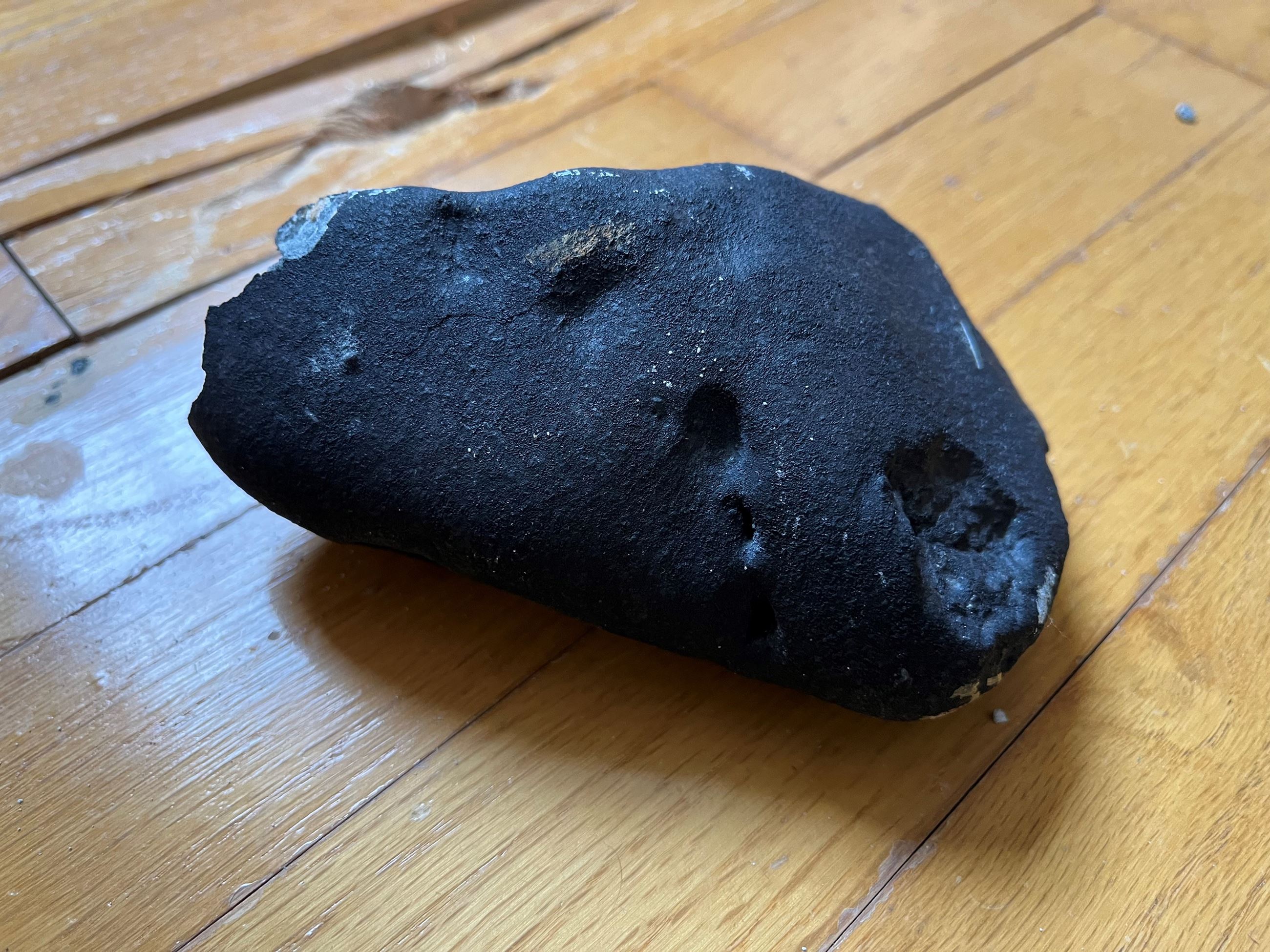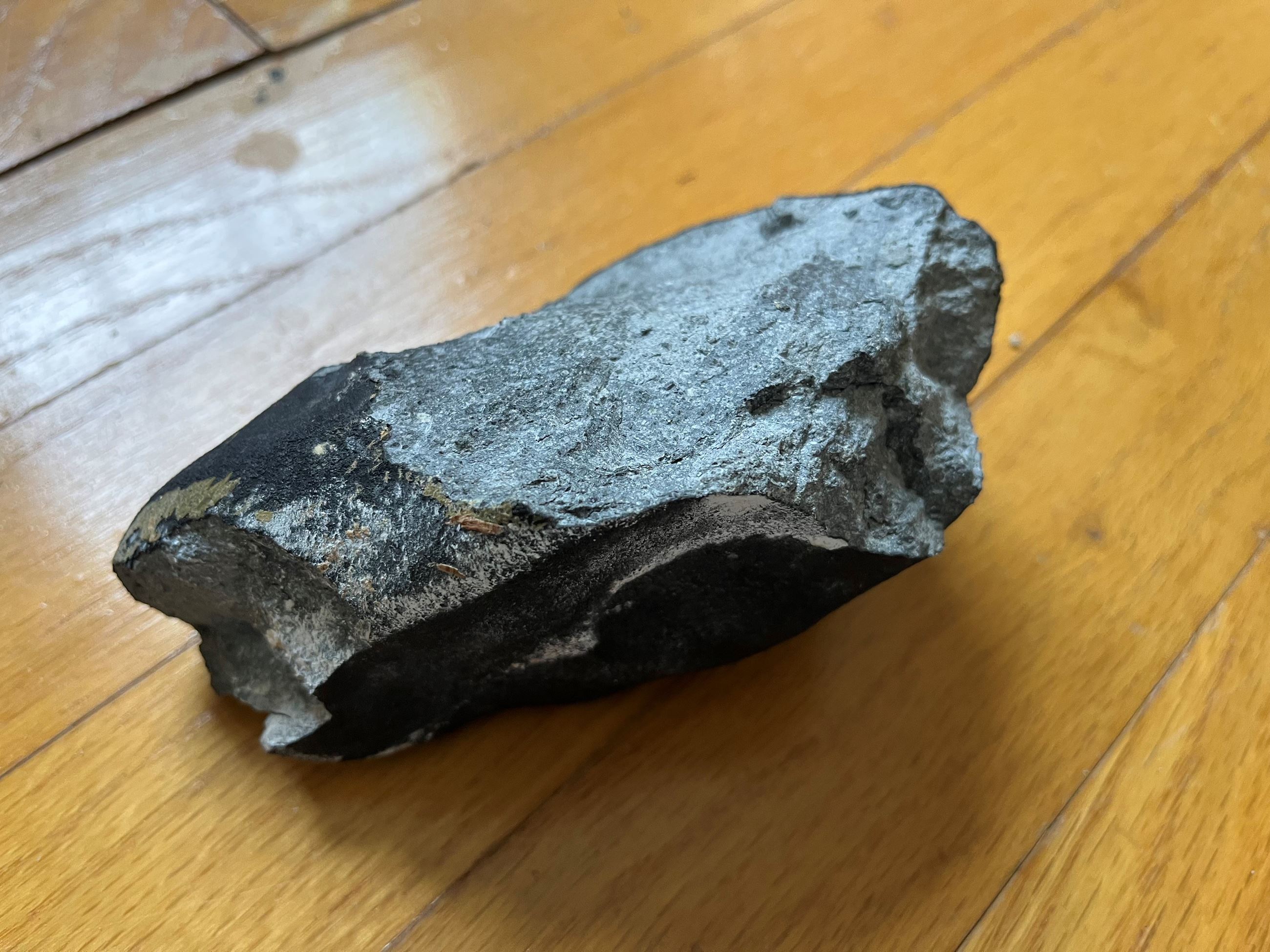Possible meteorite strikes house in New Jersey (photos)
The space rock may be part of the ongoing Eta Aquarid meteor shower.

A rock thought to be a meteorite crashed through the roof of a residential home in New Jersey's Hopewell Township on Monday (May 8) at around 1 p.m. EDT (1700 GMT).
No one was injured, and police are still investigating the nature and origin of the space rock.
"It appears whatever came from the sky fell through the roof of the top window — that's my dad's bedroom," said Suzy Kop, according to CBS News' Kerri Corrado, who first reported the news early on Tuesday (May 9).
Related: What are meteorites?

The family was home at the time, but no one was injured when the metallic-looking rock fell through the roof of the one-story home. The apparent meteorite dented the bedroom's floor and "ricocheted up" to the ceiling, where it punctured another hole, thanks to the high speed at which it must have impacted. It then bounced back to the floor, where it was discovered by Kop. She said she first thought someone had thrown a rock at their home.
Emergency responders later came by to check on the family members as well as scan the home for possible residues and radioactivity, Kop told CBS News.
"They were afraid that, you know, because it fell from the sky, was it radioactive? Could we have a type of residue on us? So they scanned us and everything came back clear," she said.
Get the Space.com Newsletter
Breaking space news, the latest updates on rocket launches, skywatching events and more!
The Hopewell Township police department shared in an update that it "has contacted several other agencies for assistance in positively identifying the object and safeguarding the residents and the object."
The space rock measures about 4 inches by 6 inches (10 by 15 centimeters) and is somewhat oval in shape, according to the police. It may be part of the ongoing Eta Aquarid meteor shower, which was most active in the first week of May and peaked just before dawn on Saturday (May 6). This annual meteor shower occurs when Earth passes through debris from Halley’s Comet, whose fragments burn up in our planet's atmosphere and can lead to stunning displays.
Sometimes, space rocks that don't completely burn up can be found on the ground, but they rarely strike populated areas. A similar incident occurred in October 2021, when a 2.9-pound (1.3 kilograms) meteorite crashed through the roof of a Canadian home and ended up on a pillow, narrowly missing the face of a sleeping resident and showering them with debris.
"A fragment hits a structure ... somewhere on the order of about half a dozen times per year globally," Peter Brown, a meteorite astronomer at Western University in Ontario, told Space.com at the time. "In North America, there's a building hit every three to five years."
The latest incident in New Jersey is still under investigation.
Follow Sharmila Kuthunur on Twitter @skuthunur. Follow us on Twitter @Spacedotcom and on Facebook.
Join our Space Forums to keep talking space on the latest missions, night sky and more! And if you have a news tip, correction or comment, let us know at: community@space.com.

Sharmila Kuthunur is a Seattle-based science journalist focusing on astronomy and space exploration. Her work has also appeared in Scientific American, Astronomy and Live Science, among other publications. She has earned a master's degree in journalism from Northeastern University in Boston. Follow her on BlueSky @skuthunur.bsky.social
-
Sagan's Muse "The team confirmed the space rock to be about 4.56 billion years old, which means it has been around since the beginning of our solar system and represents the leftover fragments from its creation."Reply
Really?









